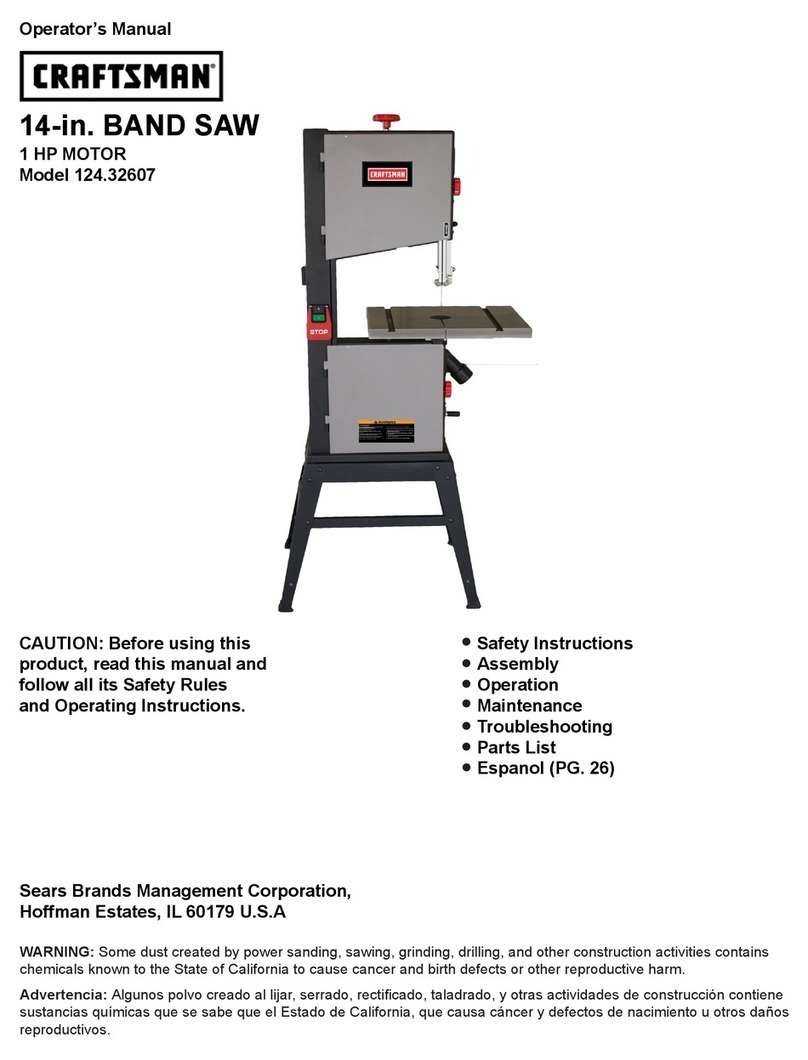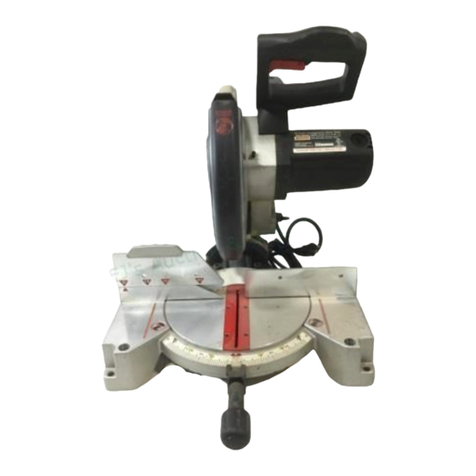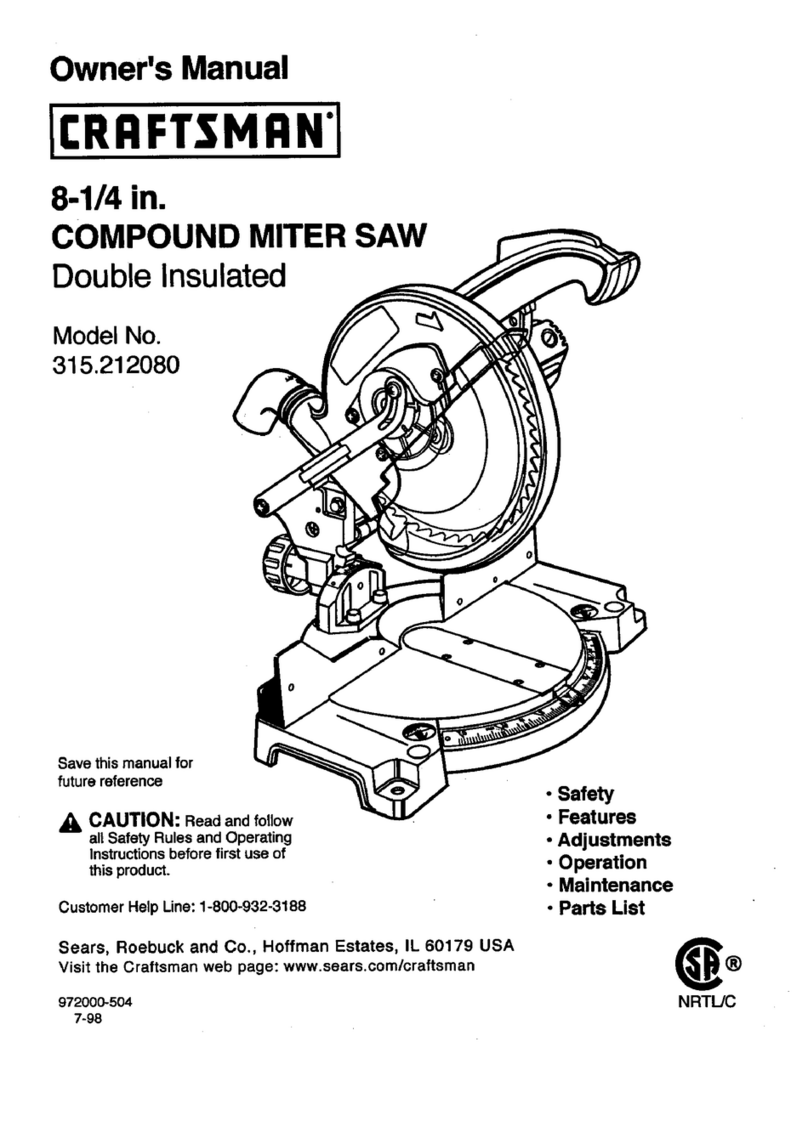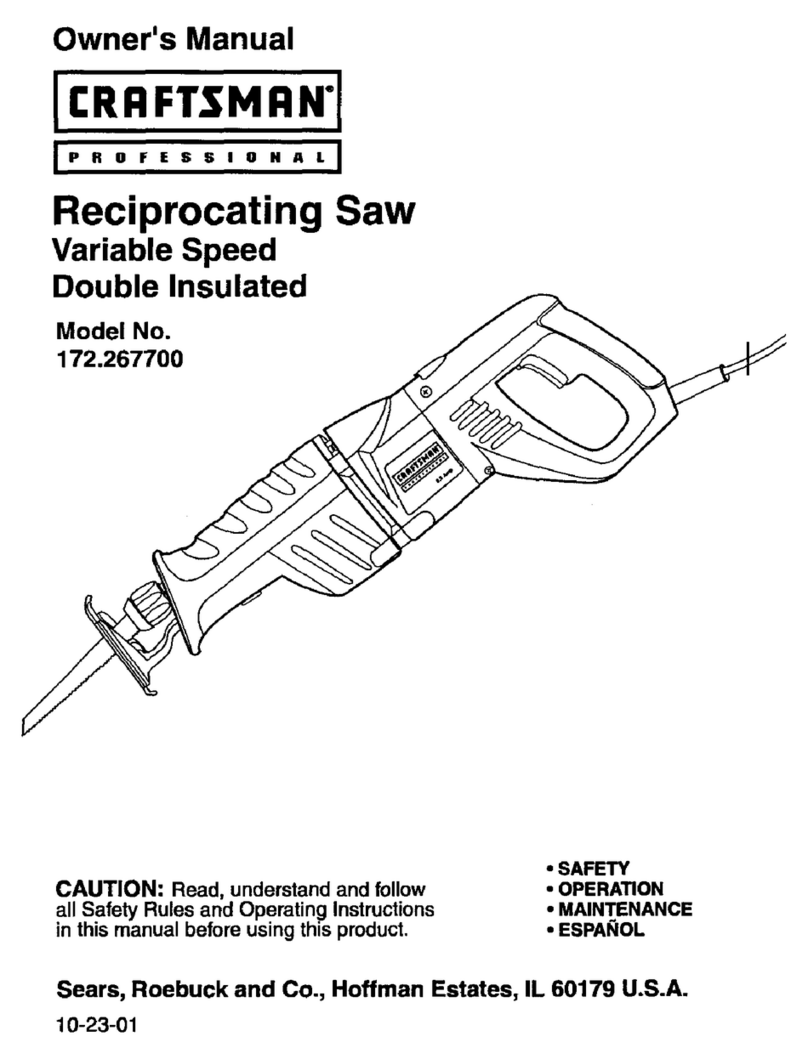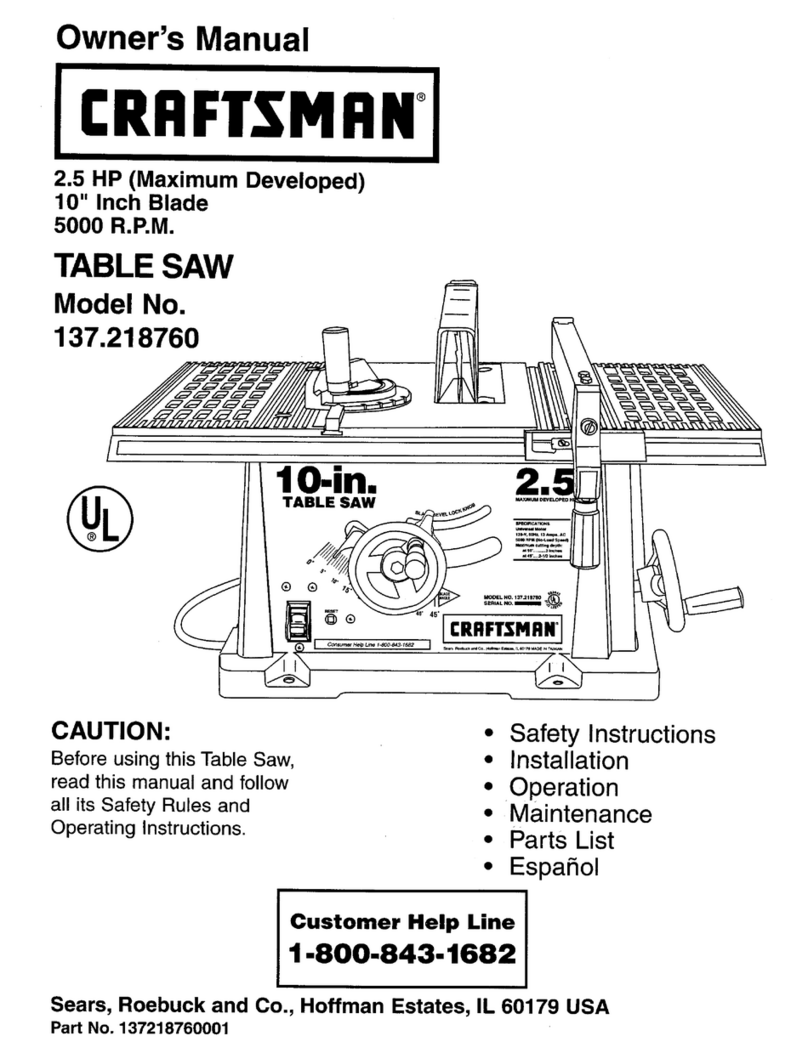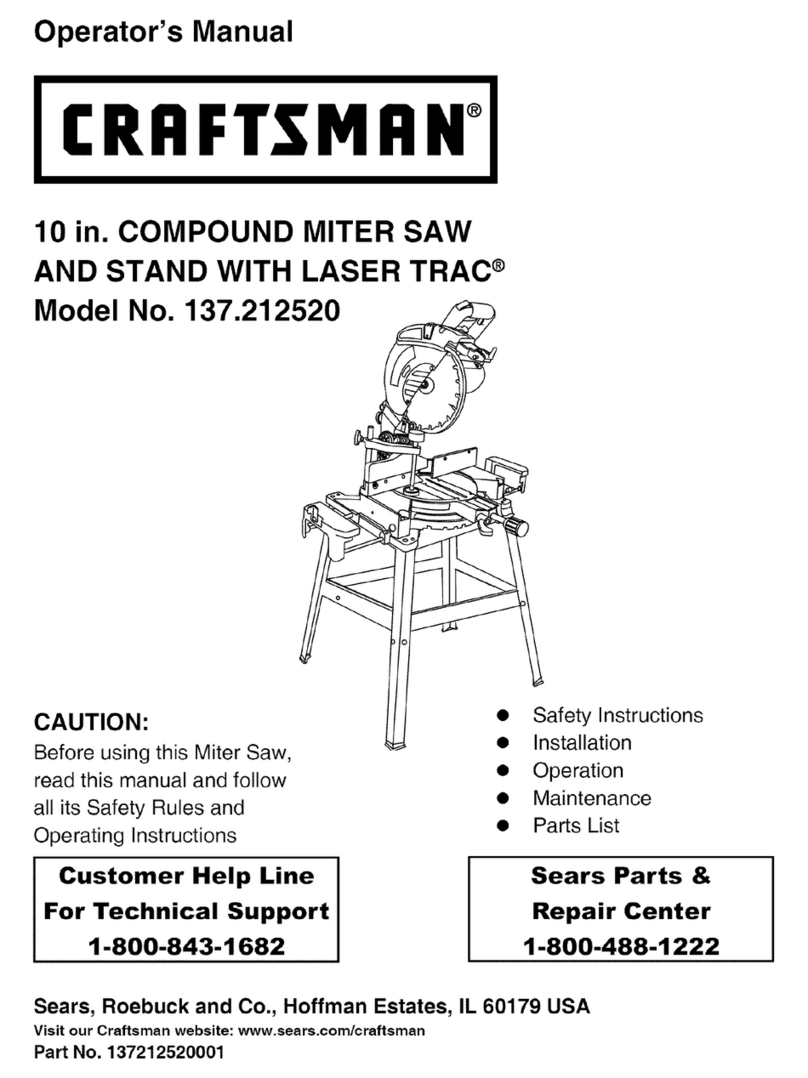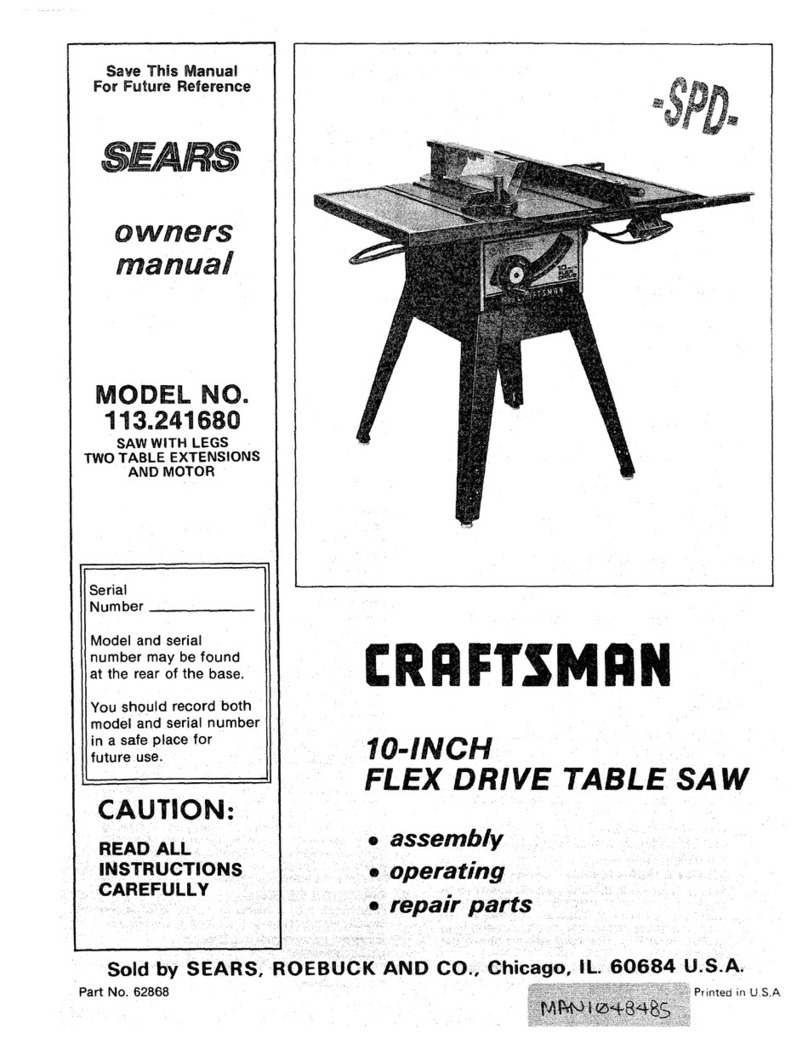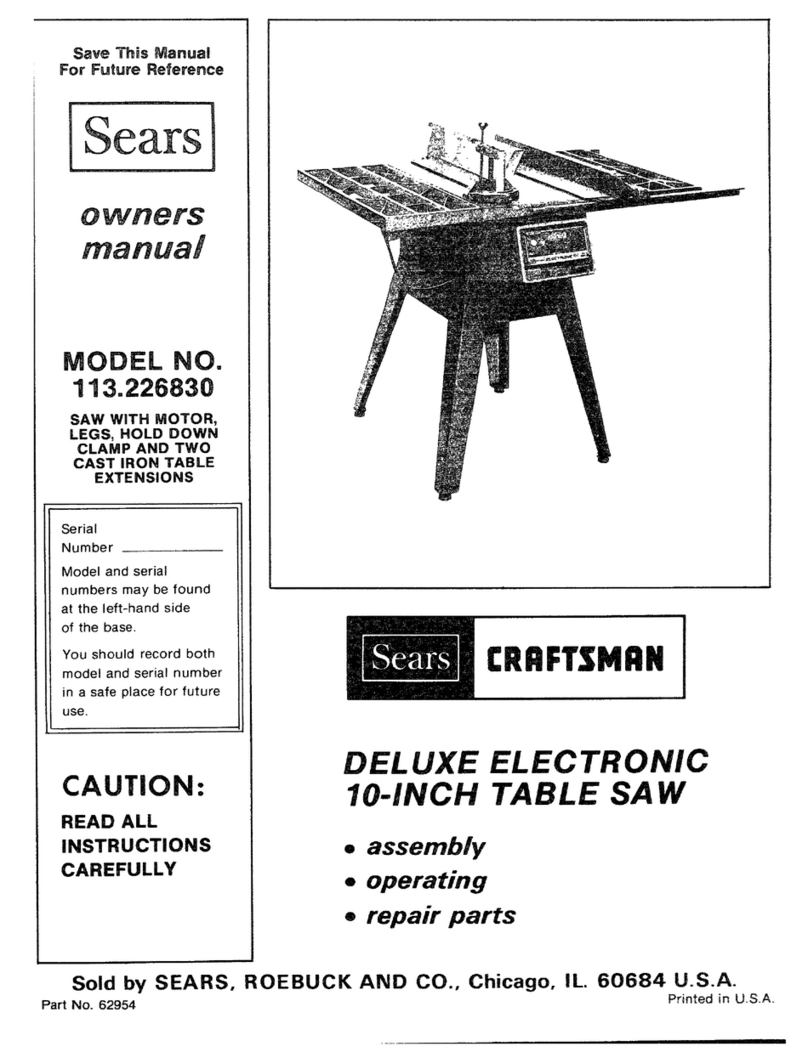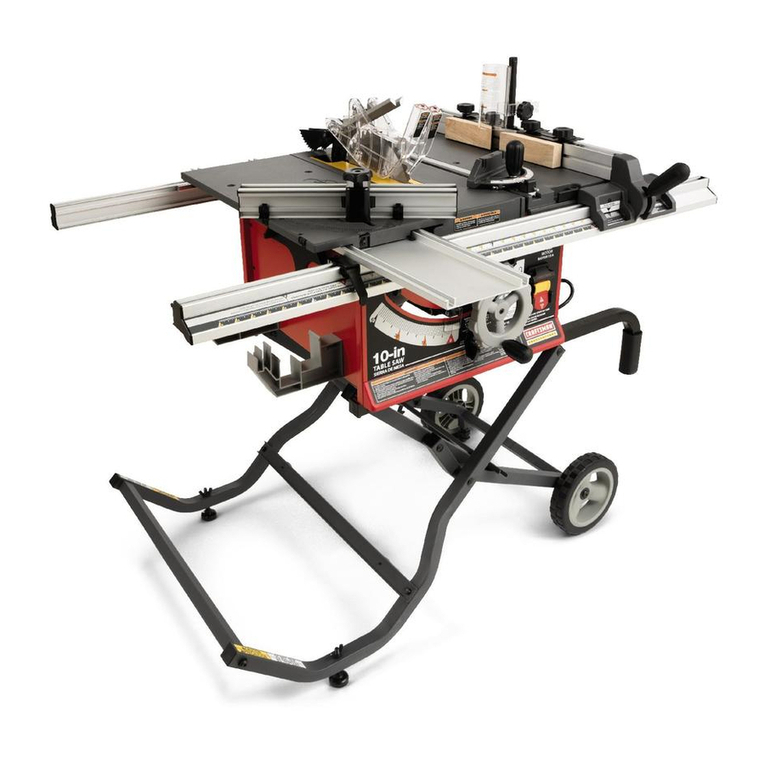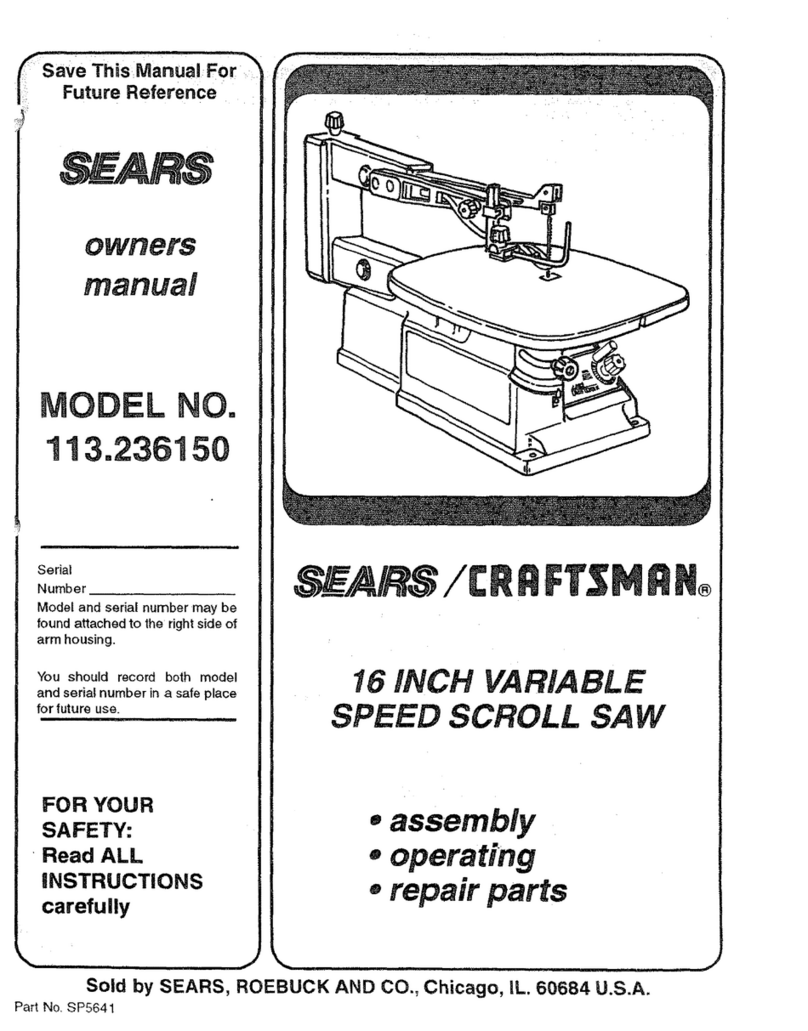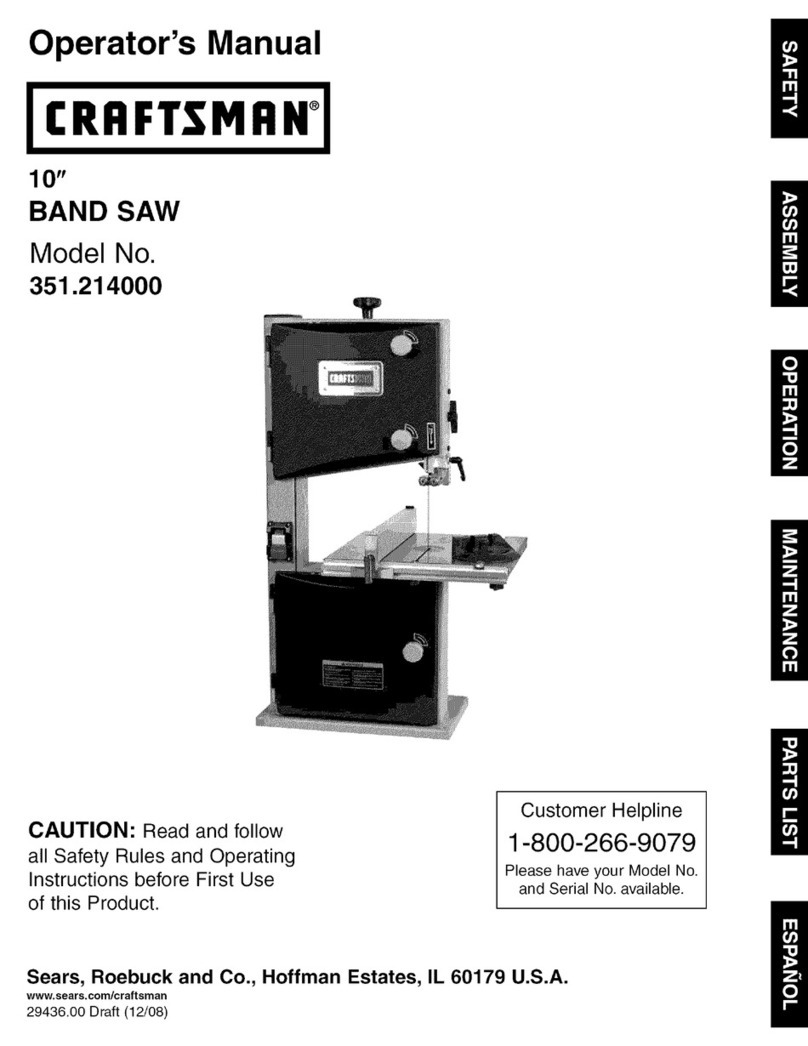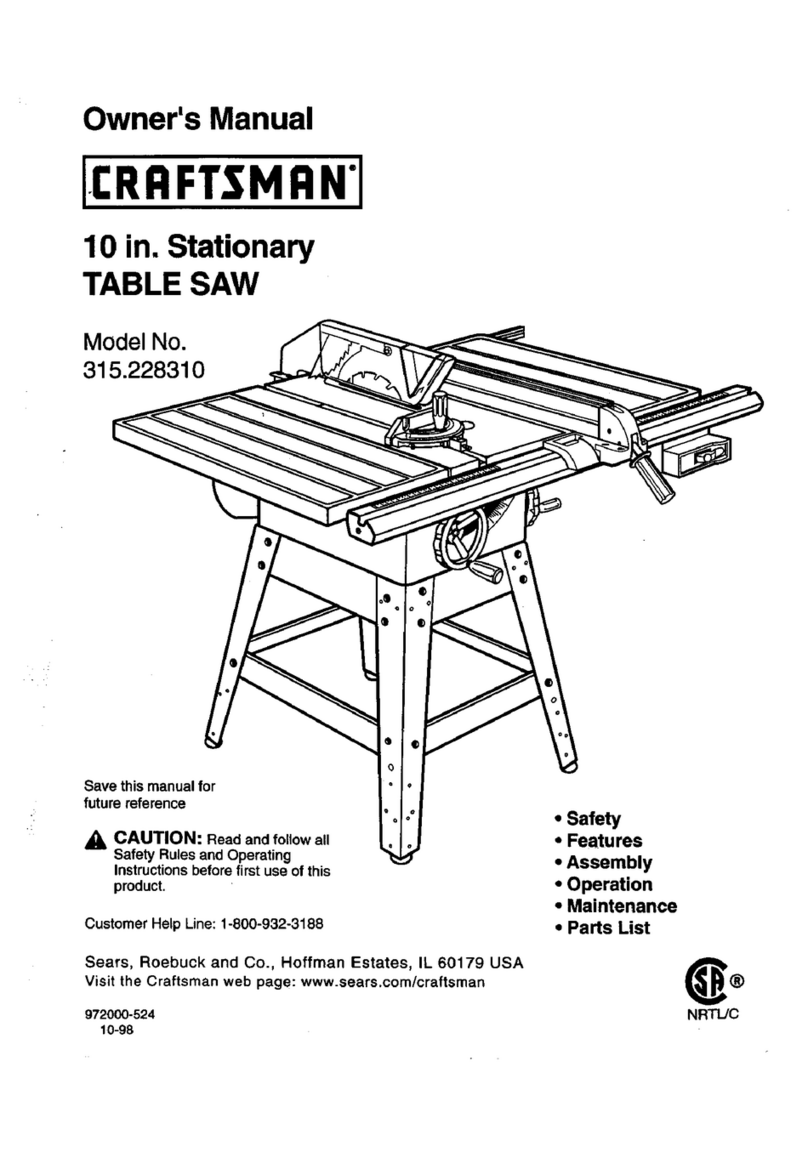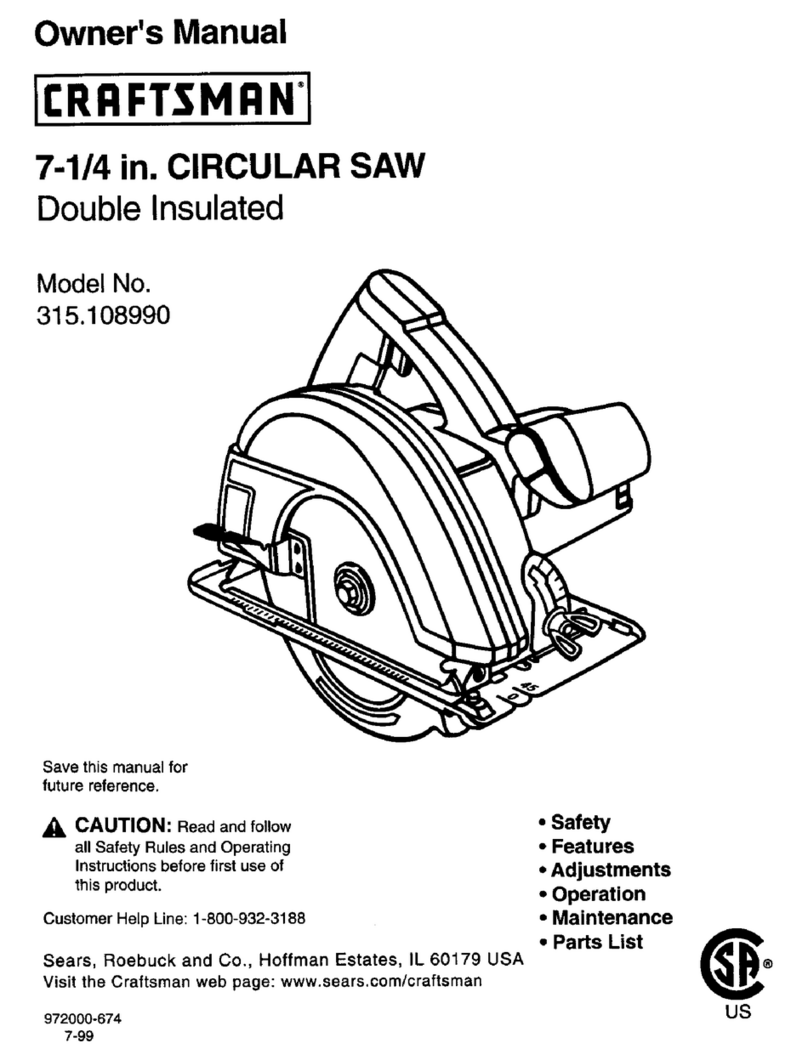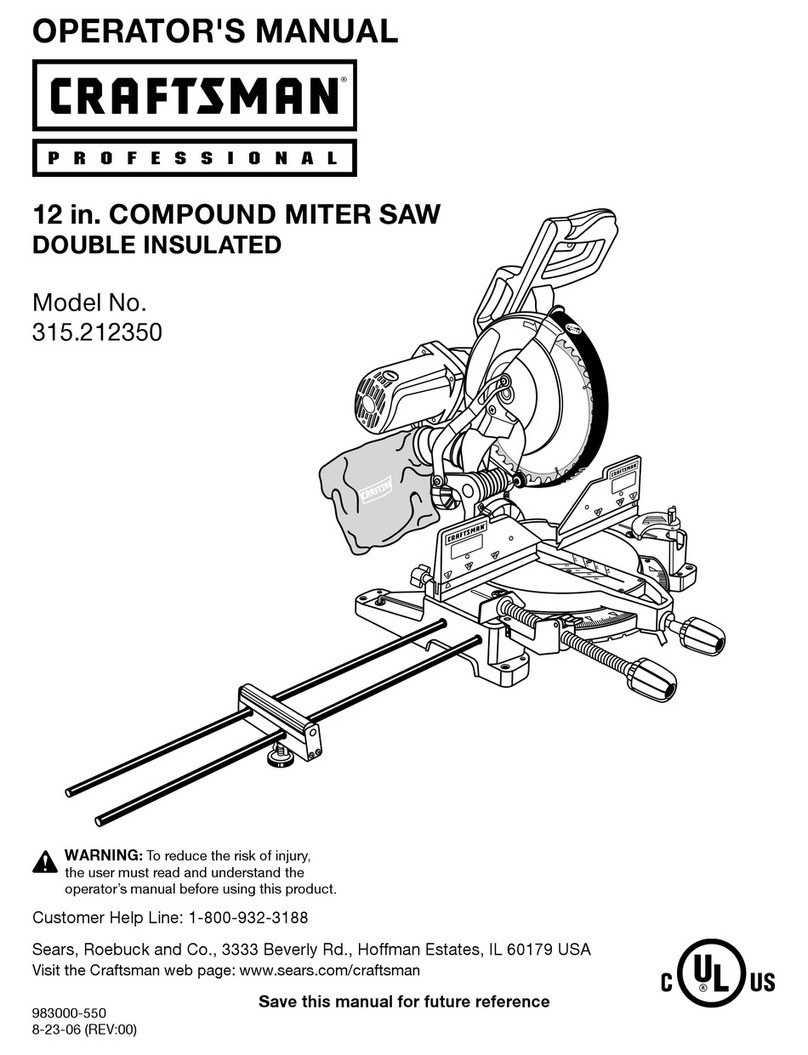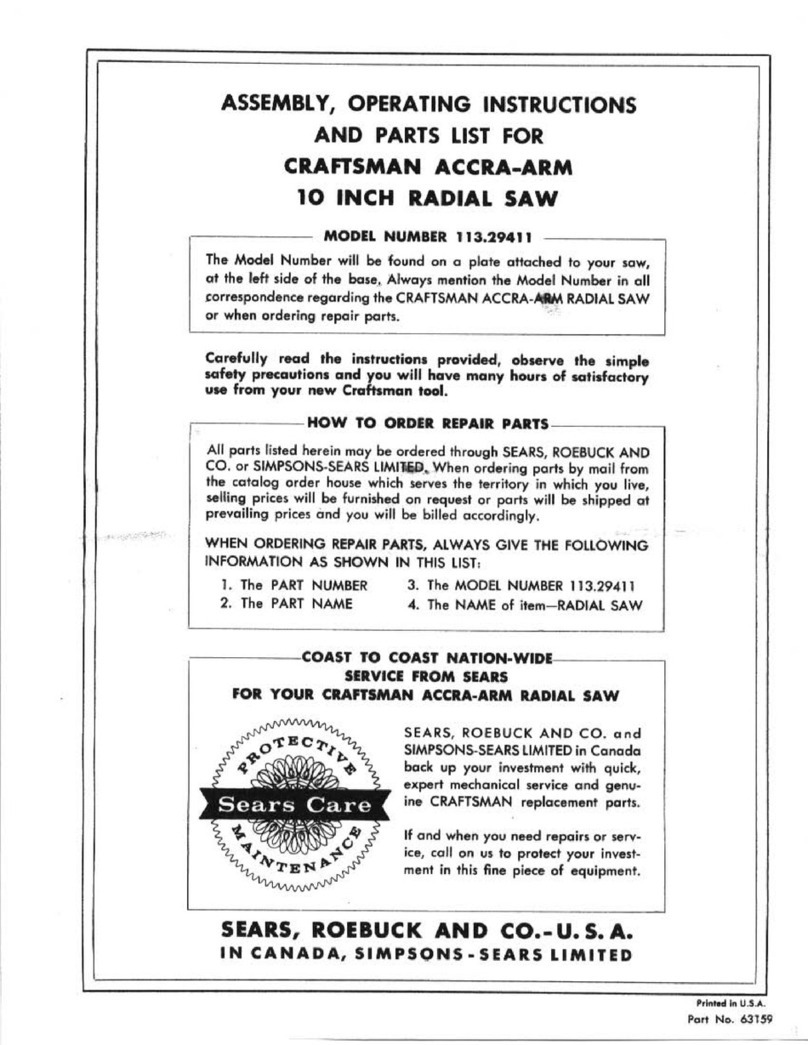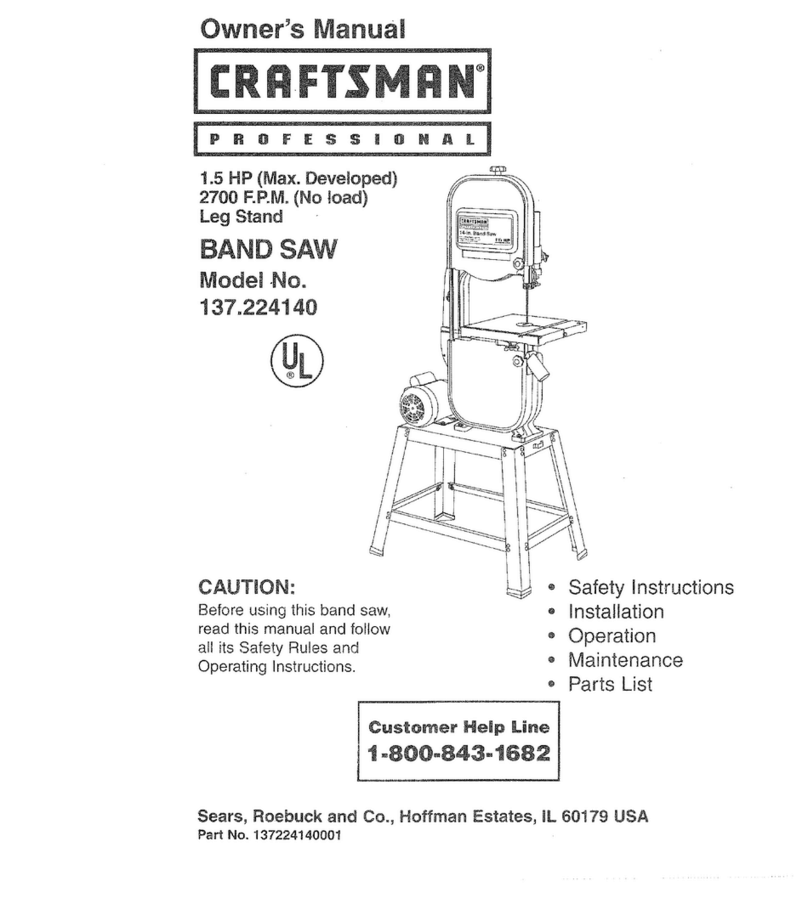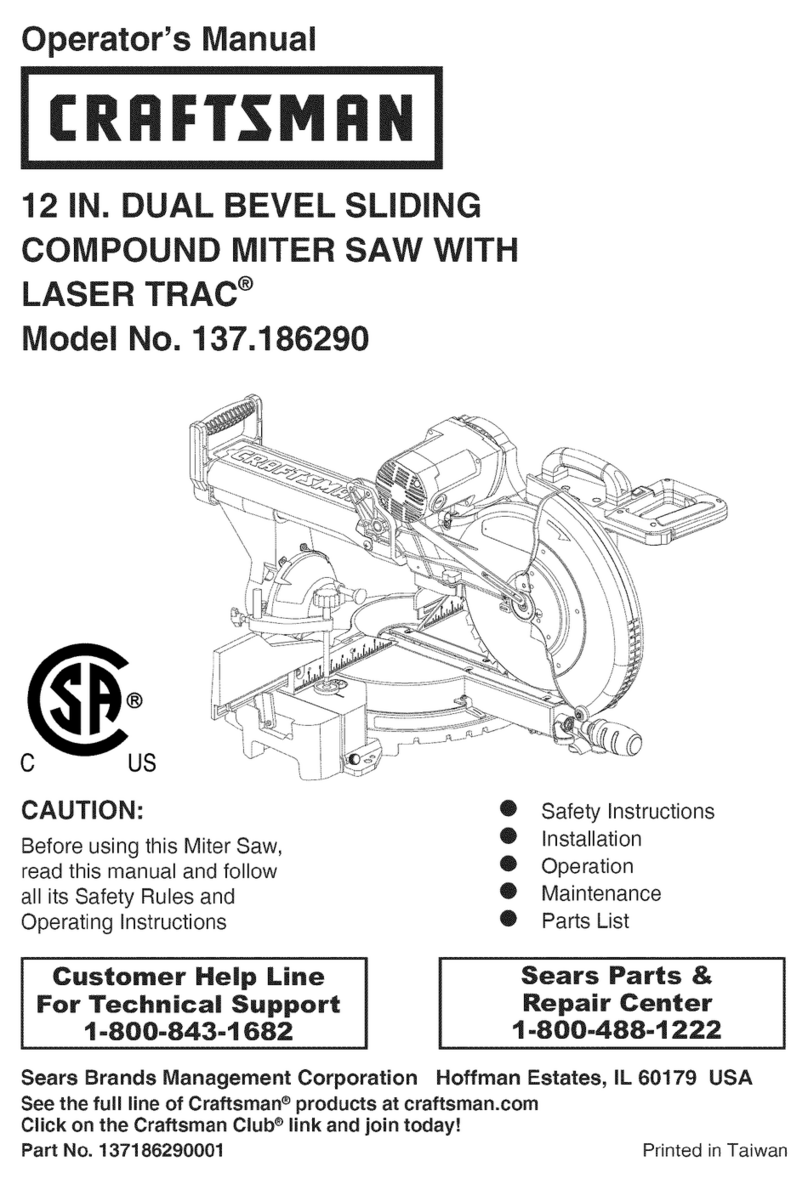RAISE BLAD
3 INCHES
E
rr-
t:7"
LD
V
<
r-.
T
~.
~
to
'---
DISTANa SHOU
BE EQUAL,
TURN BLADE-
MEASURE FROM
SAME
TOOTH
A
TABLE LEVEL
FENCE MUST LOCI<
PARAUEl WITH
MITER SLOTS
FIGURE 5
2. Measure accurately from a raker tooth on the
blade to an edge of either miter slot, as ex-
plained and shown in Fig. 5.
3. loosen the bolts, Nos. 81 and 33, holding each
trunnion, Nos. 82 and 32, to the lower table
surface. (-4 bolts total.)
4. Shift the complete under-table mechanism un-
til the blade is parallel with the miter slot.
5. Re-tighten the four trunnion screws, front pair
first.
6. Check this adjustment as previously explained
to be certain it is correct after re-assembly is
complete.
The Fence Must Lock Parallel with the Miter Slots.
Using one hand on the front end of the fence, slide
the fence to the edge of the miter slot. Push the lock
handle down slowly. If fence does not lock parallel
to miter slot adjust as follows:
1. loosen the two screws, No. 10-4, on top of the
fence end.
2. Release the fence lock handle, No. 99.
3. Adjust the two set screws on the front of the
fence end until the fence is parallel with miter
slot. Turn the two screws, on the top, up snug.
Then tighten each one securely.
-4. Check the adjustment by sliding the fence
away from the slot and returning several times
to see if it locks parallel each time. The fence
lock arm may require occasional adjustment
to maintain proper tension.
With the fence lock handle, No. 99, in the unlocked
position turn the fence lock rod, No. 108, slightly in
a clockwise direction until proper tension is attained
when fence lock handle is placed in the lock position.
The Arbor Tilt Tension Spring, No. 36, provides
tension to keep the mechanism tilted at any angle,
thus eliminating the need for a manual control lock.
After the tool is "broken in," you may find it neces-
sary to increase this tension. Loosen the lock nut,
No. 87, and turn the bolt, No. 37, until enough ten-
sion has been applied. Re-tighten the lock nut.
Note: After a few hours of operation, tighten all
pulley set screws.
FIGURE 6
The Mitre Gauge has been designed to assure a
maximum amount of accuracy. It has been adjusted
at the factory to give accurate -45° and 90° settings
and carefully packed to protect this fine setting in
shipment.
It
is possible that rough handling in shipment may
have disturbed this setting. By use of a combination
square, see figure 6, its setting may be checked be-
fore use. If it should be found necessary to reset the
stops, proceed as follows:
1. Loosen the Mitre Gauge lock Knob.
2. Back off the Adusting Screws.
3:
Using a combination square, set the Mitre Pro-
tractor 90° to the Mitre Bar. Then tighten the
lock Knob. Push in the Indexing Pin and turn
the Socket Hd. Set Screw until its oval tip con-
tacts the Indexing Pin.
-4. Repeat the operation above to adjust the two
-45° positions using the 45° face of the Com-
bination Square.
5. The pointer may also have to be re-adjusted to
indicate exactly 9.0° and 45°.
OPERATION:
The Blade provided with this saw may be used for
both cross-cutting and ripping.
For proper chip clearance and best general results,
the blade should project through the work-piece ap-
proximately
%
inch.
Do not force material into the Blade too fast. Use
a straight, direct, steady feed which does not over-
tax the cutting capacity of the blade.
To eliminate creep of your work when making a
Miter cut, clamp the work ~ce to the gauge.
Support long work as it leaves the rear of the
table.
If overall thickness of Dado set exceeds
%
of an
inch in width, the Saw Clamp Washer, No. 86, should
not be used in order to insure proper thread engage-
ment of Hex Nut No. 85, on the Arbor.
For other ideas, suggestions, etc. pertaining to the
operation of Circular Saws, refer to the Circular Saw
Booklet found in the envelope.
NOTE: After a few hours of operation, tighten all
Pulley Set Screws.
SAFETY:
While the bench saw is one of the most widely used
woodshop power tools, it is by nature of its general
design, one of the most dangerous in the hands of
inexperienced or careless operators. The bench saw
is not, however, an unsafe tool when used with com-
mon sense and good judgment.
Use a push block rather than letting the hands get
closer than 3· inches to the blade on narrow cuts.
Never hold the hands over the blade when making
blind groove type cuts. Stand to one side when com-
pleting a cut. A loose piece caught by the blade can
fly back with surprising force.
Always stop the saw when removing waste stock
from near the blade, when making adjustments, or
when changing settings.
Do not wear dangling neckties, loose baggy sleeves,
etc., while operating power tools.
-4

